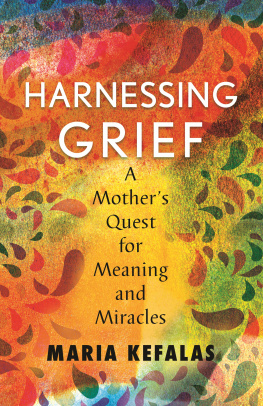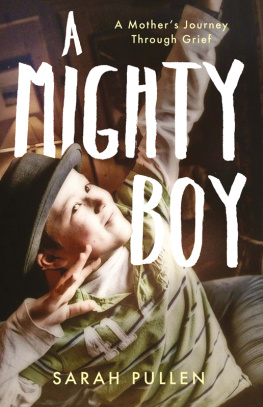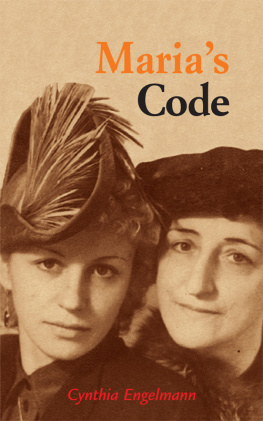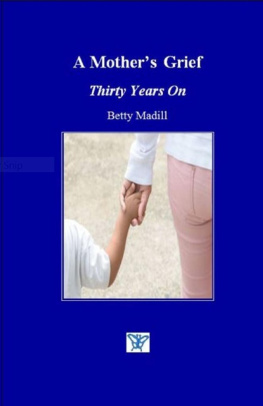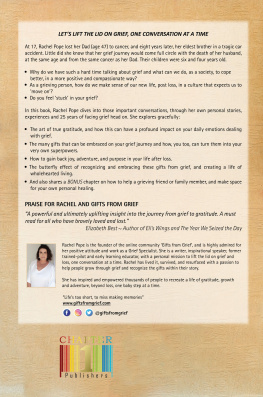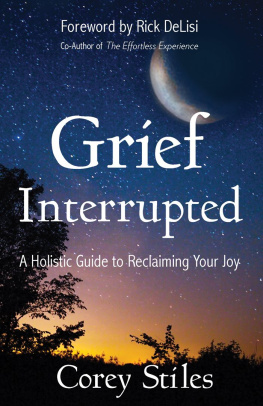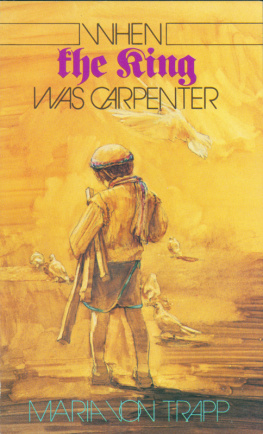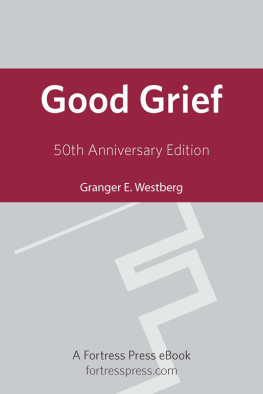Contents
Guide
Pagebreaks of the print version

For Pat, the bravest man I have ever known.
CHRISTMAS
I t was Christmas morning 2009.
Just two days earlier, on December 23, I had given birth, at age forty-two, to a baby girl my husband, Pat, and I named Calliope Joy. Calliope is a family name; my sister and great-aunts and cousins were named Calliope. Students of Homer know Calliope is a daughter of Zeus, a goddess of epic poetry and song. Her divine power is to inspire beauty in the world. And Cals middle name is Joythe feeling that engulfed Pat and me when we first met our third child.
I dont know if I understood the perfection of that moment until years later, when our lives were transformed by such trauma and tragedy that we wondered how we would survive it all. We all have some perfect moments in our lives, and we usually miss them, or perhaps mark them down merely as a good day. But we are blind to the perfection until time passes; until we use time as a yardstick to measure and review this moment to realize the treasure it was. We can see perfection only from a distance.
That Christmas morning, there was snow on the ground, but the sky was clear and sunny. I sat in the lobby of the hospital with this new baby in my arms and my father seated next to me. My parents and Pat were so relieved. Despite the risks of having a child in my forties, Cal was perfect. Of my three children, she had been the easiest delivery, though she weighed more than eight pounds. Even though I was advanced maternal age, Pat and I had not been inclined to terminate the pregnancy, but I had done the standard genetic screenings recommended by my obstetrician. All the testing revealed a healthy child.
Cal had been born in Pennsylvania Hospital, Americas first hospital, founded by Benjamin Franklin. The rooms were stuffy and tiny, but the birth and delivery program was one of the best in the city, and if something went wrong Pat and I wanted the baby to have the best care. Her older sister, Camille, who was ten, and her brother PJ, who was five, had been born in the same hospital.
My dad and mom had driven down from their home in Massachusetts to see us and Cal, which meant missing Christmas with their other seven grandchildren, who still lived in my hometown of Lexington. Those grandchildren and other family members were disappointed not to have Papou and Yia-Yia (the Greek words for grandpa and grandma) there, but there was no way my parents would have missed out on meeting the new baby, checking in on me, and spoiling my older children. When they expressed concern about leaving the rest of the family behind, I chided them, Cmon, how often do you get to see your tenth grandchild?
There is an image I will always remember from that day. I was holding the baby, surrounded by flowers and gifts from the people who had visited us in the hospital. And my father kept trying to catch the eyes of passersby so he could brag about his granddaughter who was coming home on Christmas Day. The best present anyone could ask for, he would say, beaming. He had always taken great pride in his childrens accomplishments, but he was old-fashioned enough to believe that motherhood and marriage ranked higher than publications and promotions.
Having a baby on Christmas is a big deal. Even doctors and nurses are sentimental about the holiday. As the other poor souls headed to see loved ones on the oncology, ICU, or cardiac floors, I basked in the only good reason to be in a hospital on that day. As a student of Greek mythology, I should have realized I was tempting fate with my hubris, the sense that good fortune is earned, deserved, and secure.
It would take me years, after tragedy and grief and heartbreak struck over and over again, to realize that at this moment my life was the best it would ever be. Looking back, I saw no warnings that it was all about to collapse around us in two years. But maybe thats the point: when you get to this peak of happiness and joy, the laws of gravity instruct us, you must come down. The thing is, who wants to look down when you are headed up and the world seems to be nothing more than an expanse of uninterrupted bliss?
My pregnancy with Cal was unplanned, a total accident. As it turns out, after teenage girls, the second-largest group of women with unplanned pregnancies are forty-year-old women. I should have known better. After all, both my grandmothers had babies at forty-two. When my academic friends heard the news about my surprise pregnancy, they teased me endlessly because that same week I was scheduled to give a talk titled Unplanned Parenthood. After the publication of my second book, on teen and single moms, the New York Times had dubbed me an expert on marriage and the family. The truth is, I didnt know anything truly profound about any of those things until Cal joined our family.
A month before Cals second birthday, in December 2011, Pat made arrangements for a long-delayed vasectomy; we joked that there would be no more children with his second wife. When he went in to prepare for the procedure, he told the doctor about some back pain. Pat had been training to run a marathon. Of course your back aches, I teased, you have a toddler and youre in your forties trying to run a marathon. But Pat never had back pain. Because the doctor also noted Pats sudden weight loss, he ordered a barrage of blood tests and scans. They revealed dangerously high levels of calcium in his blood, which means his bones werent getting any. The radiologists reports noted that Pat, who was forty-five, had the back of a man twice his age. The vasectomy would be forgotten, and Pat would be referred to an oncologist at Pennsylvania Hospital.
Pat would be seeing the doctor the Monday after Thanksgiving. That weekend I tried to tempt him with all his favorite foods, but his appetite had evaporated. The back pain was so pronounced he could hardly get out of bed; instead, he took his meals in an armchair in the living room because the wooden chairs in our dining room were now instruments of torture.
When we arrived at the hospital that Monday morning, it was clear I was the only one who hadnt realized Pat had cancer. The medical secretary did not look up from her desk as she handed me a brochure that read, What to do when your loved one is diagnosed with cancer. I tried to give it back to her, but Pat silently motioned for me to put it in my bag.
We were ushered into an examination room, a place where doctors could have some privacy when they gave people bad news. There was only a small window looking out onto an alley. We were on the other side of the building from where Cal had been born. Pat would be seeing an oncologist named Lee Hartner. Dr. Hartner looks like a triathlete with his shaved head and athletic build, a look popular among oncologists. Perhaps the hairless look was offered as a proof of solidarity with their patients. Dr. Hartner moved efficiently and had a skilled poker face: a prerequisite for any good oncologist.
Dr. Hartner took the care to turn away from the computer to deliver the news; he looked Pat directly in the eyes as he spoke. I remember how he held Pats gaze and did not blink, trying to make a connection with us. It was a trick I learned as a researcher, a way to ensure that the people you were speaking to knew you were focused on them and engaged. Years later we would learn that Dr. Hartner teaches medical students at the University of Pennsylvania how to give patients difficult news. You could tell he understood that people would repeatedly relive the moment when they learned they had a cancer. It would even have a name: Diagnosis Day. Once someone learns they have a cancer, a clock starts ticking over their head.

